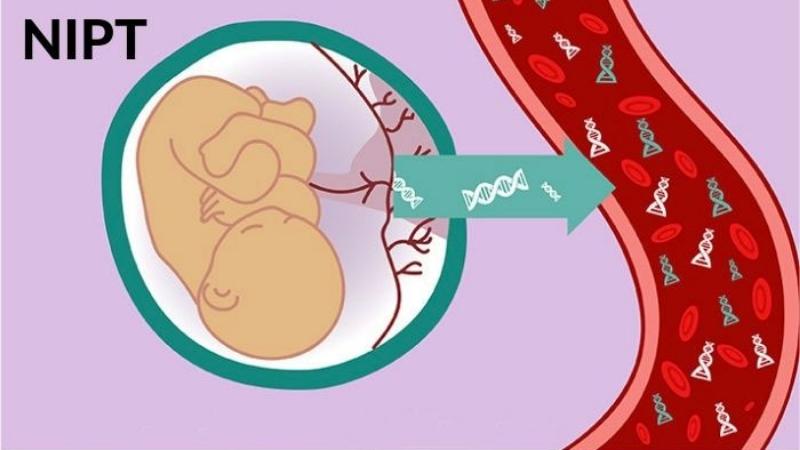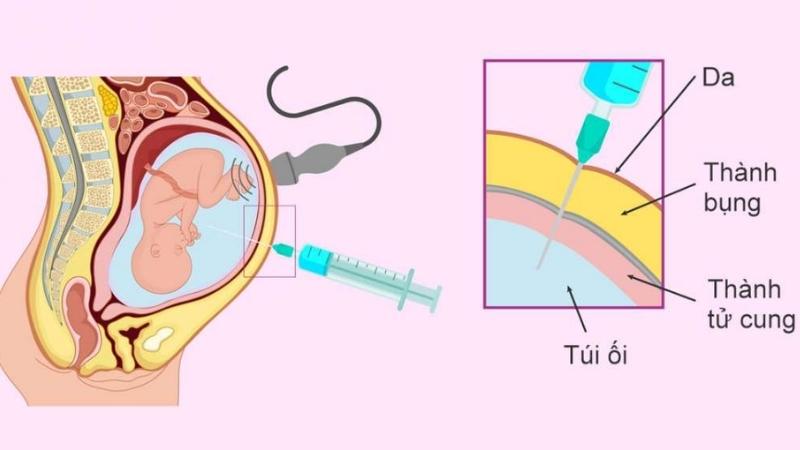Determining the gender of your unborn child is a fascinating topic, and many people turn to folk beliefs for insight. Today, let’s explore the signs of having a baby boy and uncover the facts you need to know!
Related Reading:
1 Unraveling the Myths About Baby Gender
There are numerous folk beliefs that persist in predicting the gender of an unborn child. For example, a preference for sweet foods indicates a girl, while smooth and glowing skin suggests a boy. A pointed belly indicates a boy, and a faster fetal heartbeat indicates a boy… But what’s the truth behind these notions? Let’s find out!
Fetal Heartbeat
Some believe that the fetal heartbeat can reveal the baby’s gender. A heartbeat below 140 beats per minute is thought to indicate a boy, while a faster heartbeat suggests a girl.

However, this belief holds no scientific basis. According to Dr. Bui Chi Thuong, a lecturer in Obstetrics and Gynecology at Ho Chi Minh City University of Medicine and Pharmacy, a normal fetal heartbeat can range from 110-150 beats per minute or 120-160 beats per minute, regardless of the baby’s gender.
Dr. Thuong advises that if a pregnant woman notices an unusually fast or slow fetal heartbeat, she should consult a specialist for advice and avoid potential risks to the fetus, such as fetal heart failure or miscarriage.
So, the notion of a faster heartbeat indicating a boy is not scientifically supported and may even be misleading. An abnormal fetal heartbeat, whether faster or slower, warrants closer medical attention and regular check-ups.
Reference: 11 Things Every (First-Time) Pregnant Woman Should Know
Cravings for Salty Foods

It is a common belief that if a pregnant woman craves sour foods, she will have a girl, and if she craves sweet or salty foods, she will have a boy. But is there any truth to this?
According to Master Bui Chi Thuong, “The gender of the fetus is not determined by the mother’s food preferences. There is no scientific basis for using dietary choices during pregnancy to predict the baby’s gender. Changes in a pregnant woman’s taste buds are due to hormonal fluctuations and are not related to the fetus’s gender.”
In general, regardless of cravings, pregnant women should aim for a balanced and nutritious diet. Avoid excessive sugar intake to lower the risk of gestational diabetes, and limit salty foods to prevent high blood pressure and edema, which can affect both mother and child.
Additionally, pregnant women should refrain from consuming stimulants such as alcohol, cigarettes, and betel nut, as these can harm the fetus.
Further Reading:
Glowing Skin

During pregnancy, the body produces higher levels of the hormone beta-melanocyte, which stimulates skin pigmentation. Some pregnant women may develop spots or blemishes, but this is due to sensitive skin rather than the baby’s gender.
Generally, changes in skin pigmentation during pregnancy are mostly related to the mother’s physique and lifestyle rather than the baby’s gender influencing hormone levels.
Reference: 14 Cute, Impressive, and Easy-to-Care-For Baby Names
Slim Pregnancy Belly

According to traditional beliefs, a slim pregnancy belly indicates a boy, while a high and round belly suggests a girl.
Master Bui Chi Thuong explains that this belief is rooted in ancient times, before the advancement of medical knowledge, and is purely speculative. He says, “The shape of the belly—round, pointed, or high—depends on the fetus’s position: longitudinal, transverse, or oblique. A longitudinal position results in a longer and slimmer belly, while a transverse position creates a rounder belly. However, a fetus of either gender can assume any of these positions, so belly shape is not a reliable indicator of gender.”
The appearance of the pregnancy belly is influenced not only by the fetus’s position but also by the mother’s height and abdominal muscles. For slender women with strong abdominal muscles, the belly may appear higher, while those with weaker muscles may have a longer belly.
Pronounced Belly Button

Some believe that a pronounced belly button indicates a girl, while a slightly recessed navel suggests a boy. However, this is not accurate.
Changes in the belly button are due to pressure in the abdominal cavity. Initially, the navel is weak and the skin is thin, so increased pressure can cause the belly button to protrude. This is a mild hernia and has nothing to do with the baby’s gender.
However, if the belly button becomes significantly enlarged, it may indicate that the mother’s intestines are also compressed. In such cases, it’s important to consult a doctor for advice and timely treatment.
Further Reading:
2 When Can You Determine the Fetal Gender?
To accurately determine the gender of your unborn child, you’ll need to wait for an ultrasound after the 16th week of pregnancy. Any folk beliefs or predictions about gender are purely speculative and lack scientific foundation.
 Determining Fetal Gender
Determining Fetal Gender
Until you know the gender for sure, it’s a good idea to pay attention to the following signs to adjust your diet accordingly.
3 Methods for Determining Fetal Gender
Non-Invasive Prenatal Testing (NIPT)
NIPT is a blood test used to assess the risk of specific genetic disorders in the fetus. It can also detect the presence of the Y chromosome (found in male babies), making it possible to determine the baby’s gender.
The accuracy of NIPT can be as high as 98-99% or more. Doctors usually perform this test during the second or third trimester (after about 10 weeks).
 Non-Invasive Prenatal Testing
Non-Invasive Prenatal Testing
Ultrasound
Ultrasound gender determination involves observing the position of the fetus’s organs to monitor the baby’s health. This method is typically performed between the 18th and 22nd weeks of pregnancy when the baby is large enough to visualize the genitalia. However, due to the small size of the fetus, determining the gender may still be challenging.
 Ultrasound
Ultrasound
Other Invasive Methods
If ultrasound fails to provide a clear answer, doctors may recommend additional, more invasive tests, such as amniocentesis or chorionic villus sampling.
These tests can also detect chromosomal abnormalities like Down syndrome. However, it’s essential to carefully consider the risks and benefits with your doctor, as both procedures carry the possibility of serious complications.
 Amniocentesis
Amniocentesis
Further Reading:
We hope this article has provided valuable insights into the myths and facts surrounding gender prediction. Remember, for accurate information, always consult medical professionals!
Why Do Pregnant Women Crave Sour Foods?
Pregnancy and Cravings: Why Do Pregnant Women Crave Sour Foods?
Pregnancy brings with it a myriad of changes, and one intriguing phenomenon is the craving for sour foods. This peculiar preference leaves many expecting mothers wondering why they are drawn to sour tastes and whether it is a harmless indulgence or a harmful temptation. Unraveling the science behind these cravings can offer fascinating insights and much-needed answers.
































